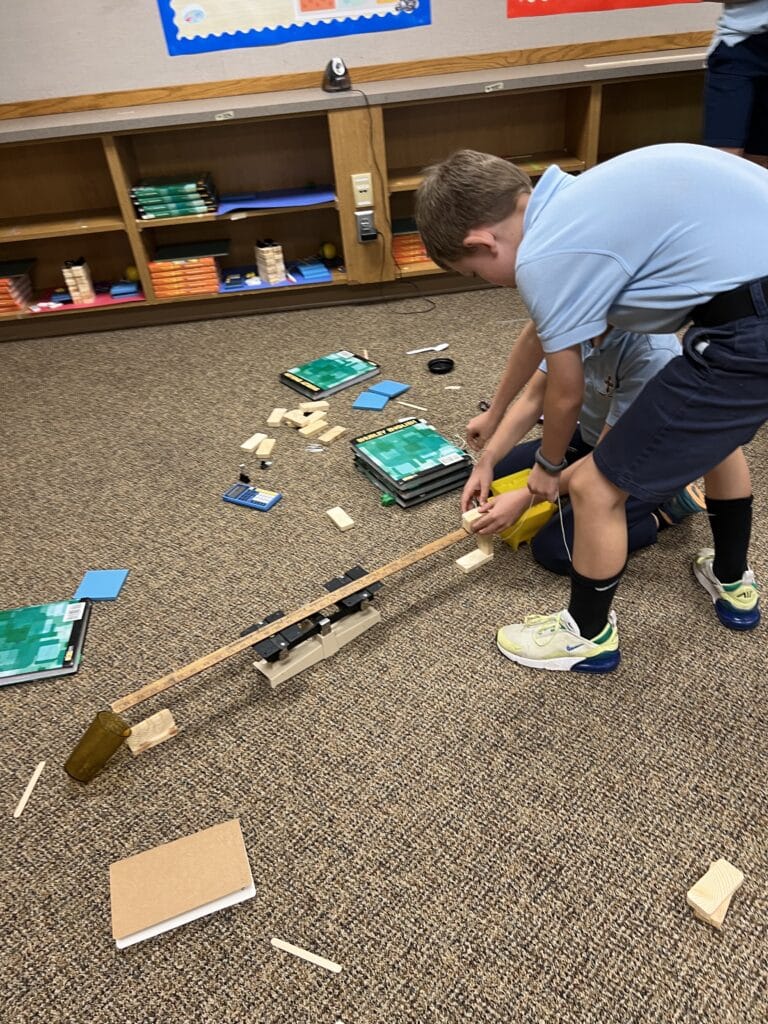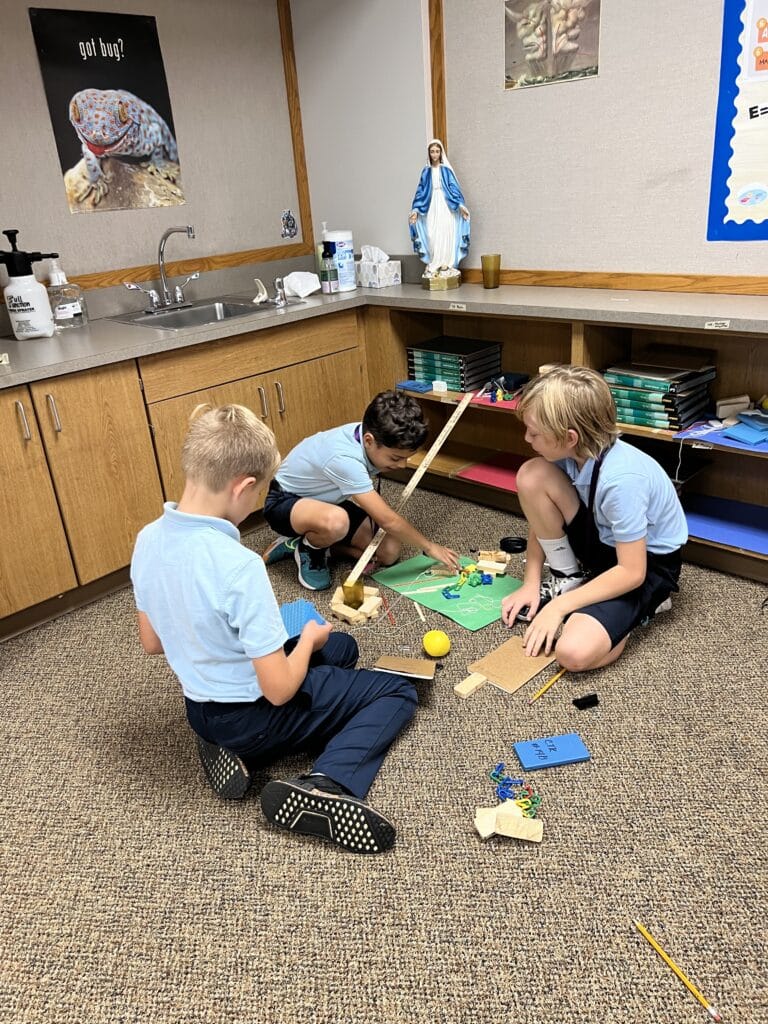At Prairie STEM, we believe that learning should be an exciting and hands-on experience. Recently, the 4th-grade students at Christ the King School embarked on a thrilling journey into the world of Rube Goldberg machines, exploring the fascinating realm of simple machines, energy, and the Engineering Design Process.

Who was Rube Goldberg?
Rube Goldberg, a multi-talented individual, was not only a cartoonist but also an engineer and inventor. His intricate and humorous illustrations depicted overly complex machines designed to perform simple tasks. Inspired by his whimsical creations, the 4th graders were introduced to the world of engineering and problem-solving through the lens of Rube Goldberg.

The Challenge:
The students were tasked with working in groups to create their own Rube Goldberg machines. The goal was to incorporate simple machines, understand different types of energy, and follow the Engineering Design Process to build a contraption that accomplishes a specific task.
Understanding Energy:
Before diving into the hands-on activity, the students were introduced to the different types of energy involved in their Rube Goldberg machines:
Kinetic Energy: The energy of motion. As objects move, they possess kinetic energy. Students learned to identify kinetic energy in various parts of their machines.
Potential Energy: Stored energy waiting to be released. Understanding how potential energy could be harnessed and transformed in their creations was a crucial aspect of the lesson.
Mechanical Energy: A combination of kinetic and potential energy. Students discovered how their Rube Goldberg machines could efficiently transfer and transform energy to achieve the desired result.

The Engineering Design Process:
The students followed a structured approach to design and build their Rube Goldberg machines, embracing the Engineering Design Process:

Ask: What task do we want our machine to accomplish? Each group brainstormed ideas and selected a simple task for their machine to perform.
Imagine: How can we design a machine to complete the task? Students sketched their initial ideas, considering the use of simple machines and the incorporation of different types of energy.
Plan: With a clear vision in mind, groups outlined the materials needed, assigned roles, and created a step-by-step plan for building their machines.
Create: The hands-on phase! Students brought their designs to life, experimenting with different materials, simple machines, and energy sources.
Test and Evaluate: Groups tested their machines, making adjustments as needed. They learned the importance of iteration and problem-solving in the engineering process.
Improve: Based on feedback and observations, students made improvements to enhance the efficiency and functionality of their Rube Goldberg machines.

The Rube Goldberg lesson not only provided an engaging platform for 4th graders to explore the world of engineering but also fostered teamwork, creativity, and critical thinking skills. As the students witnessed their machines in action, the sense of accomplishment and excitement was palpable. Through this hands-on experience, Prairie STEM continues to inspire young minds to become the problem solvers and innovators of the future.



